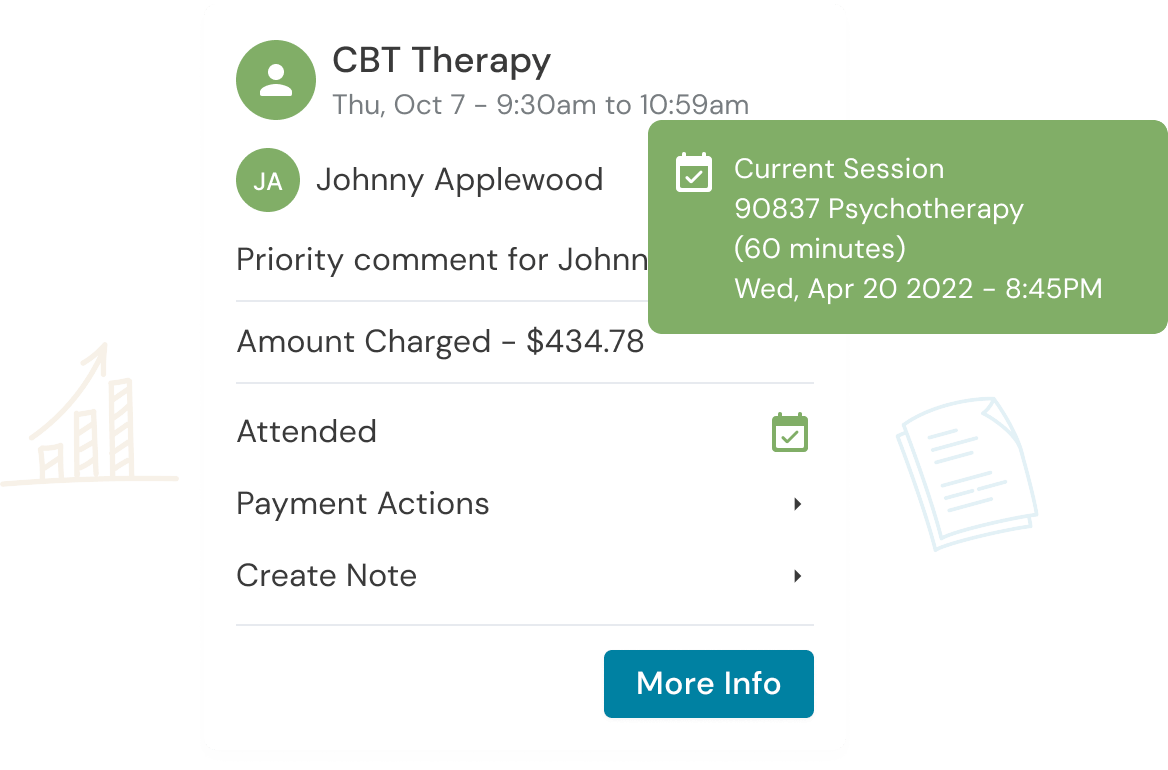The initial consultation is often the first real interaction between a therapist and a potential client, and it’s a crucial opportunity to determine if the therapeutic relationship will be beneficial for both parties. A 15-20 minute phone consultation allows you to assess the client’s needs, clarify expectations, and decide if there’s mutual compatibility. This short window of time, while not exhaustive, can offer key aspects to consider when determining whether a client is the right fit during a phone consultation.

1. Clarifying the Client’s Needs
One of the primary goals of the consultation is to understand the client’s presenting issues and goals for therapy. While 15-20 minutes won’t allow for an in-depth exploration, you can ask open-ended questions to get a sense of their concerns.
Questions to ask:
- “What brings you to therapy at this time?”
- “Can you tell me a bit about the main challenges you’re currently facing?”
- “What are you hoping to achieve from therapy?”
These questions will give you a snapshot of the client’s struggles and help you determine if their needs align with your areas of expertise. If the client mentions issues that fall outside of your scope — such as specialized trauma therapy, substance abuse, or eating disorders — you’ll be able to identify early on whether or not you’re the best person to help them.
2. Assessing Your Specialization and Competence
Every therapist has a unique skill set and area of specialization, and it’s important to consider whether the client’s issues align with your expertise. For example, if you specialize in treating ADHD and have extensive experience treating anxiety and trauma, a client who expresses struggles related to anxiety and trauma that overlap with ADHD symptoms, this might indicate a good fit. However, if their needs don’t align with your specialization, it’s essential to communicate that clearly.
Questions to consider:
- Does the client’s presenting issue fall within your scope of practice?
- Can you provide evidence-based treatments for their specific concerns?
- Do you have the training and experience to address their needs effectively?
If the client’s needs align with your training, it’s a good sign that you could be the right fit. However, if you feel that their issues would be better addressed by another type of therapy or specialist, it’s important to let them know and refer them to an appropriate provider.
3. Identifying the Client’s Goals and Motivation for Therapy
The client’s goals and motivation for therapy are key factors in determining if they are a good fit. Some clients may be highly motivated and have a clear idea of what they want to work on, while others may feel stuck or unsure about what they need from therapy.
Questions to ask:
- “What do you hope to gain from working together?”
- “What would you like to be different in your life as a result of therapy?”
- “Have you tried therapy before? If so, what worked or didn’t work for you?”
By asking these questions, you can gauge the client’s readiness for change and get a sense of whether their expectations are realistic. If a client is seeking quick fixes for deep-seated issues or is unclear about their goals, you may need to consider if they are prepared for the therapeutic work required.
4. Compatibility with Your Therapeutic Approach
Another key factor to consider is whether the client is a good fit for your therapeutic approach. Every therapist has a specific style, whether it’s cognitive-behavioral therapy (CBT), psychodynamic therapy, mindfulness-based therapy, or another modality. It’s essential to ensure that the client feels comfortable with your approach and that it aligns with their preferences and needs.
Questions to consider:
- Does the client’s presenting issue align with the interventions or methods you typically use?
- How comfortable is the client with the type of therapy you offer?
- Are they open to the idea of trying evidence-based practices, or do they have specific preferences?
For instance, if you use a structured approach like CBT but the client is seeking a more exploratory, long-term therapy without a focus on practical strategies, there may be a mismatch. It’s important to provide a brief explanation of how you work and see if the client responds positively.
Example: “I primarily use cognitive-behavioral therapy, which focuses on how our thoughts and behaviors impact our feelings. In our work, we would collaborate to develop skills and strategies to manage the challenges you’re facing. Does that sound like something you’d be interested in?”
5. Assessing Rapport and Comfort
Building rapport is one of the most critical aspects of therapy. The client should feel comfortable with you and trust you enough to be vulnerable. Although the consultation is brief, you can still get a sense of how well you and the client connect during the conversation. If the conversation flows smoothly and the client seems at ease, it’s a good indication that you might be a good match.
Questions to ask yourself:
- Does the client seem comfortable and open during the call?
- Do I feel comfortable working with this client?
- Does the conversation flow naturally, or is there tension or awkwardness?
If the client seems hesitant or resistant, it’s worth exploring further. Sometimes, clients may be nervous during the first consultation, which is normal, but if there’s a persistent sense of disconnect, it may be a sign that the therapeutic relationship won’t be as productive as it could be.
6. Determining Practical Factors: Availability and Logistics
In addition to therapeutic fit, practical considerations can play a role in determining whether a client is the right fit. Availability, location (even if it’s virtual), fees, and scheduling preferences need to be discussed to ensure that both parties are on the same page.
Questions to ask:
- “What days and times are you generally available for sessions?”
- “How do you feel about virtual therapy sessions, given my online practice?”
- “Do my fees align with your budget, and are you comfortable with the financial commitment?”
Logistical concerns like mismatched availability or fee structures can sometimes indicate that the client isn’t a practical fit for your practice. Discussing these early on ensures that both you and the client are aware of any potential obstacles before committing to the therapy process.
7. Exploring the Client’s Expectations
Clients sometimes come to therapy with expectations that may not align with what therapy can offer. It’s important to understand the client’s expectations about how therapy works, the role of the therapist, and the pace of progress. This conversation can help manage potential mismatches.
Questions to ask:
- “What are your expectations of me as your therapist?”
- “How do you see therapy helping you?”
- “Is there anything specific that you want me to know about how you’d like us to work together?”
If the client’s expectations seem unrealistic or incompatible with your therapeutic style, it’s better to clarify this early on. For example, if the client is looking for advice-giving rather than exploration, or if they expect rapid results for complex issues, you may want to explain how therapy typically progresses.
8. Trusting Your Instincts
As a therapist, your instincts are valuable. Pay attention to how you feel during the consultation. If something feels off or if there’s a sense of mismatch, it’s worth reflecting on that after the call. Your initial impressions can often provide useful guidance, particularly when deciding whether the client’s issues are within your competence, if there’s potential for a strong therapeutic alliance, and if the logistics will work out.
Questions to reflect on:
- Did I feel energized or drained after the consultation?
- Was there any part of the conversation that left me concerned about the potential fit?
- Can I envision working with this client long-term?
Conclusion: Making the Decision
The 15-20 minute phone consultation is not about making definitive judgments, but it is a time to assess whether the client’s needs align with your expertise, whether there is the potential for rapport, and whether practical considerations fit. If after the call you feel confident about these aspects, it’s likely that the client will be a good fit. However, if you have reservations, it’s important to trust your instincts and consider referring the client to another therapist better suited to their needs.
By approaching the consultation with curiosity, openness, and a clear sense of your own boundaries and expertise, you can ensure that both you and the client start therapy with the best chance of success.

Grow with Owl Practice.
Reduce clinical administrative tasks and transform more lives with Owl Practice. Owl Practice provides all the tools you need to make your practice successful. Join the thousands of care professionals using Owl to run their practice every day.



